Peter Ireland – 12 May, 2014
Leonard earned his reputation - as something of an enfant terrible - while in his 30s with shows such as Nobodies and Headlands. But he's now 50, and there are no terms - even in French - to describe where such enfants might end up. He's never done polite or respectable, and seems not at all interested in the kind of management jobs most of his former colleagues have successfully aspired to. It's obvious there's still a need within current exhibition culture for the acuity and flair Leonard brought to it in the 1980s and ‘90s.
Wellington
Group exhibition
McLeavey Sat Here
Curated by Robert Leonard
5 April - 15 June 2014.
This exhibition is the confluence of three related stories: a recent focus on the career of Wellington art dealer Peter McLeavey, beginning with Luit Bieringa’s 2009 film The man in the hat and continuing with Jill Trevelyan’s 2013 biography; a moment in McCahon’s career, his 1975 drawing entitled McLeavey sat here; and the continuing career of curator Robert Leonard, who at the beginning of this year took up the position of Chief Curator at the City Gallery after eight years directing the Institute of Modern Art in Brisbane, this being his first exhibited show at Civic Square. Much has been expected of this return of such a prodigal son.
McLeavey’s career has become of interest for a number of related reasons: his sheer longevity on the job, the historical heft of his stable, the fascination (at least for the art world) of many stories arising from the gallery’s operation, and the often gnomic man himself, whose style has attracted admiration, envy and enough conspiracy theorists to staff a semi-credible symposium. In the small, enclosed, self-referential and over-excitable hothouse of the New Zealand art world McLeavey is a sexy topic right now, a lodestone for any opinion going, ranging from rare artist gratitude through the slighted and misunderstood to those for whom current interest provides a stage on which to settle old scores or demonstrate a deft talent for superior summing up. McLeavey Sat Here is Leonard’s contribution to this ragbag of reactions and responses.
The hapless McCahon simply provides the match for this tinder, his little drawing done out of friendship, now finding itself a small Shetland pony harnessed to a large cartload of monkeys. In seizing on this probably, by now, “iconic” image Leonard positions himself as the complete antithesis of the late Yassar Arafat, who was said never to miss an opportunity to miss an opportunity.
In terms of curatorship Leonard came to notice in the later 1970s as almost the equivalent of McLeavey’s dealership: he did it his way. He guilelessly barged into a profession staffed largely by timid art historians for whom to take the punts he so recklessly launched was almost tantamount to being “unprofessional”. Luckily for him his hits far exceeded his misses, and he soon began ascending the professional ladder, filling influential curatorial positions in most of the country’s leading art institutions from Dunedin to Auckland over the following two decades, leaving a trail of stimulating and memorable shows and publications which still have the capacity to make even jaded pulses race a little. His audacity, carelessness for received opinion and, yes, even a touch of genius on occasions have been of inestimable value for a profession too often mired in careerist ambition and values shared only by reef-fish. For Leonard what matters is the art.
This City Gallery exhibition consists of twelve works from artists at some stage part of the McLeavey stable, plus a fifteen-image portfolio by photographer Peter Black, a commission by the gallerist to mark his 50th birthday in 1986. Leonard’s assemblage is an interesting bunch of stuff, dominated by L Budd’s huge 1993 downtown Auckland billboard, the selection seemingly determined by the need to illustrate the show’s over-riding thesis around myth-making. And in this respect the labels form the heart of the exhibition rather than the more obvious art works.
The show’s introductory label states: “McLeavey invented art dealing in New Zealand …” This rather bald assertion might raise the eyebrows of, say, Peter Webb and Barry Lett, who were establishing the way the business was to run well before McLeavey publicly set up shop in Cuba Street. The fact the Wellington dealer did it for much longer isn’t any guarantee of pioneer status. This muddling of evidence to reinforce the case being made is one of the more consistent elements of this show, and is what constitutes the actual process of myth-making because it privileges belief over evidence. Besides, McLeavey was never a conventional art dealer - in exactly the same way Leonard’s never been a conventional curator. If the gallerist invented anything it was his individual way of doing it, which ipso facto was not up for replication. The theme song at Cuba Street was sung by Frank Sinatra, not Barry Manilow.
The introductory label continues with this statement: “Our exhibition considers how artists have responded to and participated in the making of the McLeavey myth.” This may or may not have been the curatorial intention, but this claim is a fairly brazen sleight of hand, given the circumstances of the actual show. If McLeavey Sat Here is about myth-making, why not “consider” too the far greater contribution made to this process by curators and their hangers-on, whose oxygen is the gossip and conspiracy-theories bouncing around the narrow walls of the art world like balls in a fives court? Having a regular salary and a secure position in an institution tends to blind recipients to the plain, pressing fact that artists need a good dealer to sell their work as an aid to their survival: what they were all making was a buck, not a myth. Assigning any myth-making solely to the artists is as outlandish as Gestapo claiming at Nuremburg that Jews were responsible for the camps.
Full immersion in the art world resembles full immersion in the Ganges; no one comes out of it all that clean. And just as the annual dunking tends to reinforce existing beliefs, living and breathing in the art world tends to trap adherents in ever-decreasing circles where the necessary corrective of examining evidence succumbs to the lazy comfort of existing conclusions, and where fantasies can soon resemble facts. In the wider world the notion of perspective is an inducement to get our heads out of our arses: in the art world it’s just a term associated with a horizon line.
The biggest work in the show, the Budd/Tweedie billboard, also has the biggest label, and as the story surrounding it is also the biggest myth, as well as this exhibition inflating it further, the label requires to be quoted in full, even if this focus risks adding to a ballooning phenomenon:
In 1979 McLeavey changed his space for [Billy] Apple. But, as the years went by, McLeavey would prove less responsive to artist’s [sic] calls to upgrade his space. He increasingly saw it as an extension of himself, relishing every quirk and blemish as a holy relic. Some artists were galvanised by this idea. Julian Dashper, for instance, made an abstract painting based on a stain on the floor.
One of the key features of the space was McLeavey’s chaise longue, which McLeavey associated with his psychoanalytic sessions with Mario Fleisel [sic] during the 1960s. The chaise had came [sic] to symbolise McLeavey himself. For artists, its insistent presence was something to be worked around. In 1992 L Budd was left unsupervised in the Gallery [sic] while installing a show, and ‘blonded’ the beloved chaise with her own signature white paint, titling it Peter McLeavey Sat Here Too. Recalling McCahon’s drawing, Apple’s Censure, and the task of the psychologist Budd drew attention to the chaise as a symptom. McLeavey took the attack on his chaise personally. The show closed before it opened. He trucked the artist’s stuff back to Auckland and sent off the chaise for repair.
The following year, as part of Artspace’s Changing Signs billboard project, Budd installed, in downtown Auckland, this billboard of herself reclining on the blonded chaise behind a pail of ‘ceiling white’. At some point, the paradoxically publicity-averse artist (already famed for her pseudonyms) blacked-out her image with gaffer tape - as if to protect her own privacy. It was the most outrageously private kind of public art.
This serpentine sequence of statements and speculations may give the impression of a train of thought, but the engine of sense is derailed at every turn. Labels such as this require not only a proof-reader but need a logician too. Did McLeavey change his space for Apple, or was it the other way round? But, of course, this alternative conclusion would spoil where this story is going. The next sentence is a complete non-sequitur (but allowing some curatorial speculation about relics), muddying the waters - but stiffening the case - by confusing how an artist might use the space with reporting much more general comments about its modesty and marginal shabbiness. The invented relics remark is then rolled out to support the Dashper story. Given the prevailing conspiracy-theorist tone it’s surprising there’s no label suggesting the holy stain was made intentionally by the gallerist who then forced the artist to make an artwork based on it, possibly while locked up in the gallery’s tabernacle storeroom. Leonard’s “complicity” seems to imply an awful lot of coercion.
First the walls, then the carpet, now the furniture; the infamous chaise makes its entrance, along with a supporting cast of McCahon, Apple and Fleischl, Leonard yoking together these three very disparate sources into an unholy trinity, then put through a Freudian wash-cycle to come out a white, bright symptom. If Psych 301’s too challenging, how about trying Conjuring 101?
The gallerist is said to have taken this “attack” on his property “personally”. A calmer reading of the evidence might suggest, rather, he took it “professionally”, not unreasonably regarding this act as a breach of professional trust in a way Apple’s earlier interventions never were. The ‘80s fashion for transgressive statements clearly still had currency in 1992, and if in her “blonding” exercise the artist was, in childlike innocence, testing a boundary, she was certainly left in no doubt as to which side of it she came down on. She wasn’t just sent to her room; she was expelled from the house - a fact the label rather coyly fails to mention. What if Tweedie possessed “signature” matches, and in a really transgressive act tried to burn the gallery down? Would the compliant gallerist have been expected to stand calmly below in Cuba Street, dispensing cakes and ale to the firemen?
Given all the talk of complicity and myth-making, the label somewhat unaccountably also fails to mention protagonists who, then and since, have been more complicit in creating and sustaining this narrative than anyone else, including the artist, resolutely over two decades turning a storm in a tea-cup into Cyclone Merylyn. Leonard’s eagerness, even relish, in demythologising this episode stops strangely short of this revelation. Maybe it’s just that he was constrained by a word-count?
The curator’s playful contrast between the artist’s publicity-averse stance and her being famed for her pseudonyms is a charming and perhaps even clever observation, but did Tweedie never factor in the strong likelihood that in a sector where originality and authenticity are integral to credibility a proliferation of pseudonyms was bound to attract attention? Of course, it may be that this multiplication was posed specifically to confound such assumptions, but it can look equally like having your cake and eating it too.
Professionally the art world is rife with endless strategic career moves, so endemic that those implicated seem unable to conceive that any other player might not be similarly motivated. The complex personality presiding at 147 Cuba Street for so long is an unaccountable mix of the simple and the sophisticated, rather like Harold Ross, founder of the New Yorker magazine, who once put his head around the door and asked whether Moby Dick was the whale or the man. But, whatever the proportions of simple and sophisticated might be in this case, guile is not part of the equation.
Leonard earned his reputation - as something of an enfant terrible - while in his 30s with shows such as Nobodies and Headlands. But he’s now 50, and there are no terms - even in French - to describe where such enfants might end up. He’s never done polite or respectable, and seems not at all interested in the kind of management jobs most of his former colleagues have successfully aspired to. It may be something of an understatement to observe there’s still a need within current exhibition culture for the acuity and flair Leonard brought to it in the 1980s and ‘90s. There’s not much need - although perhaps too much opportunity - for the kind of in-house, in-joke, nudge nudge, wink wink indulgence this current show represents, and unless it signals a kind of irreversibly corrupted dotage there may be hope for Leonard’s upcoming Yvonne Todd survey at the same venue. In a published interview last year he rather bravely referred to elements in the curatorial profession as “operators, gate keepers and insider traders”, and, given the context, the reader was encouraged to assume he was talking about other people.
McLeavey Sat Here isn’t about where McLeavey sat; it’s about where Robert Leonard sits. And, as they say, if you find yourself resting on your laurels you’re wearing them in the wrong place.
Peter Ireland
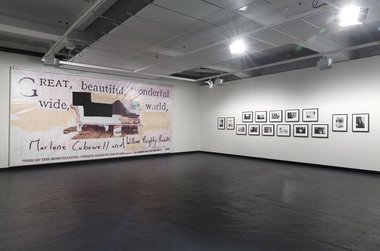
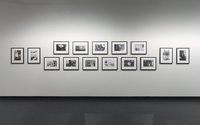

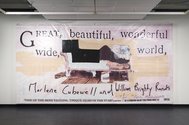
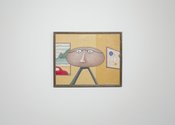
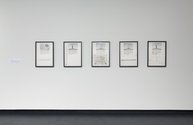

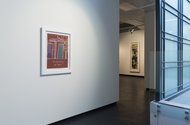
 Two Rooms presents a program of residencies and projects
Two Rooms presents a program of residencies and projects Advertising in this column
Advertising in this column



This Discussion has 0 comments.
Comment
Participate
Register to Participate.
Sign in
Sign in to an existing account.